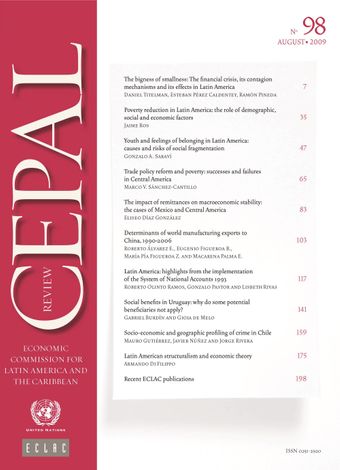-
Poverty reduction in Latin America: The role of demographic, social and economic factors
- Source: CEPAL Review, Volume 2009, Issue 98, Nov 2009, p. 35 - 45
- Spanish
-
- 03 Nov 2009
Abstract
The recent socio-economic development of Latin America presents a puzzle. This is that while economic growth in the region in the past 25 years has been very slow, falling behind past performance and behind most of the rest of the world, poverty rates have continued to fall significantly and soginicial indicators have continued to improve. This paper assesses the role of various factors —income distribution, social spending and demographic changes— in explaining the paradox. The main finding, rather disturbingly, is that with few exceptions (Chile in particular) the major factor contributing to the reduction of poverty has been the demographic dividend brought about by the demographic transition that the region recorded over the period.
© United Nations





